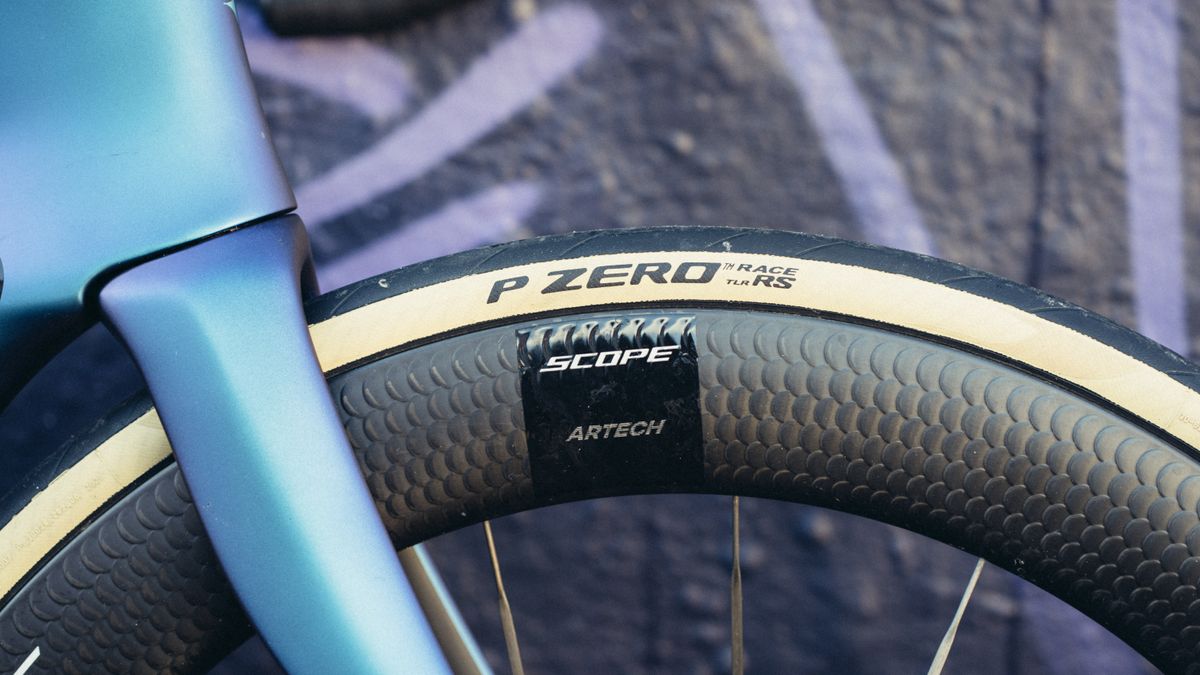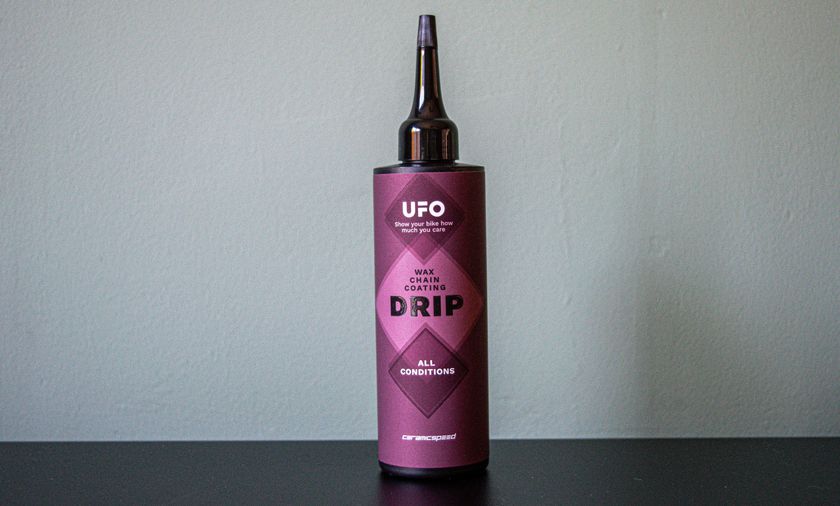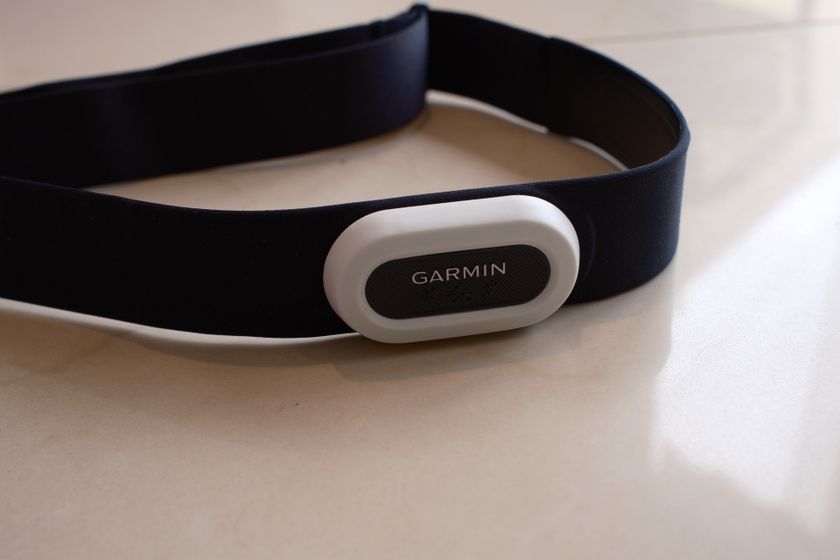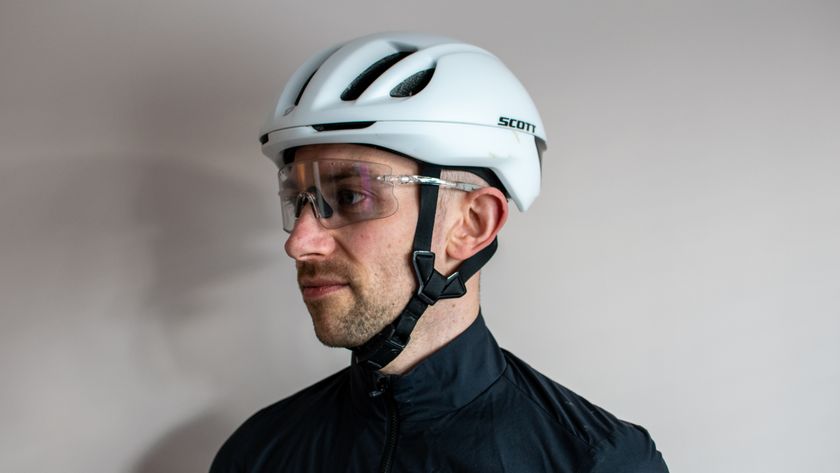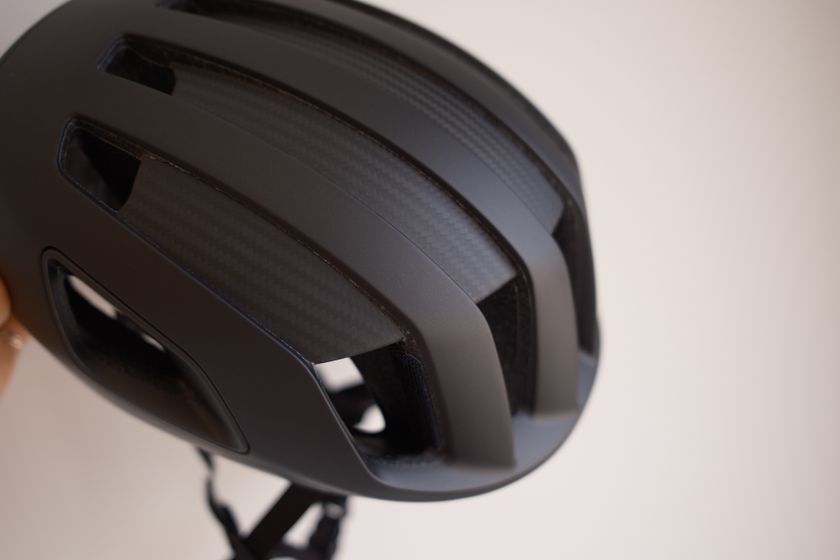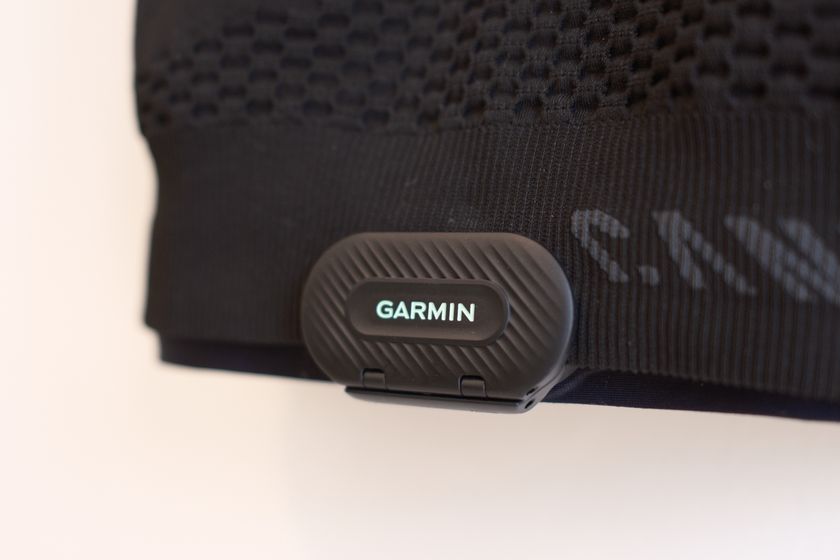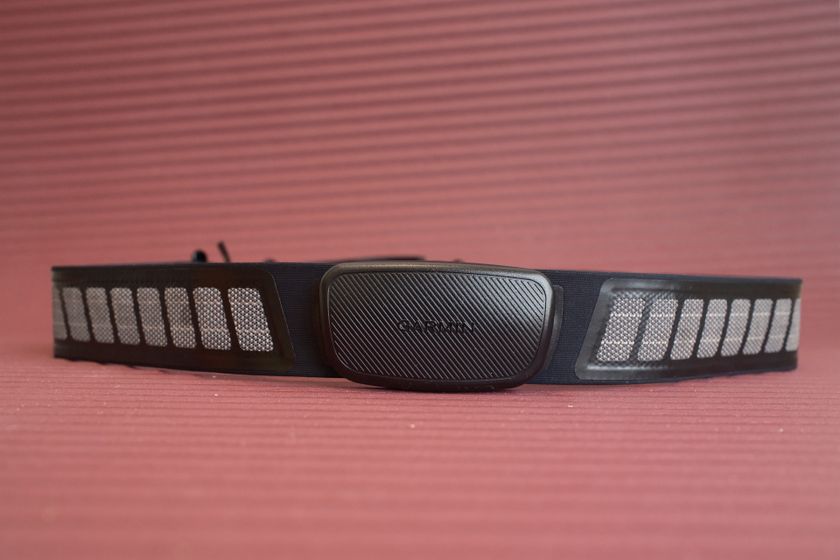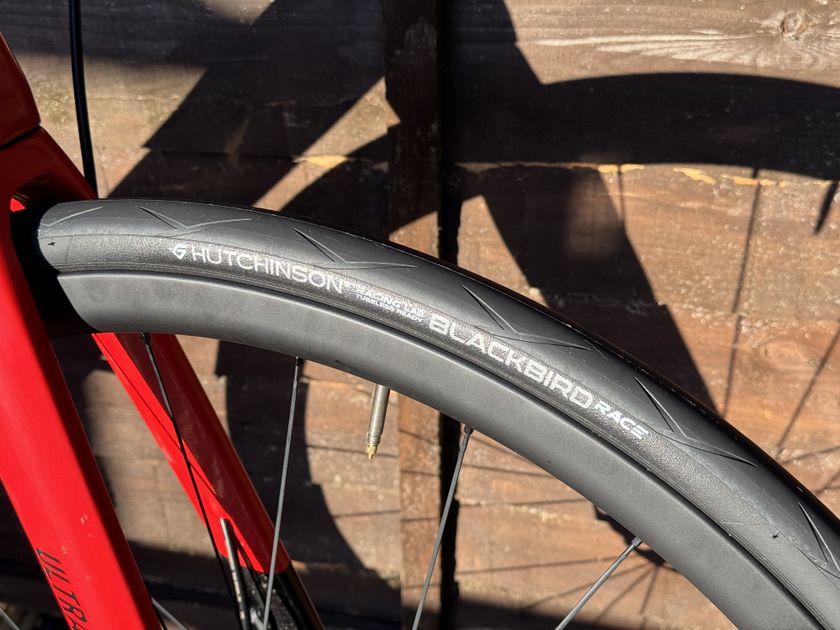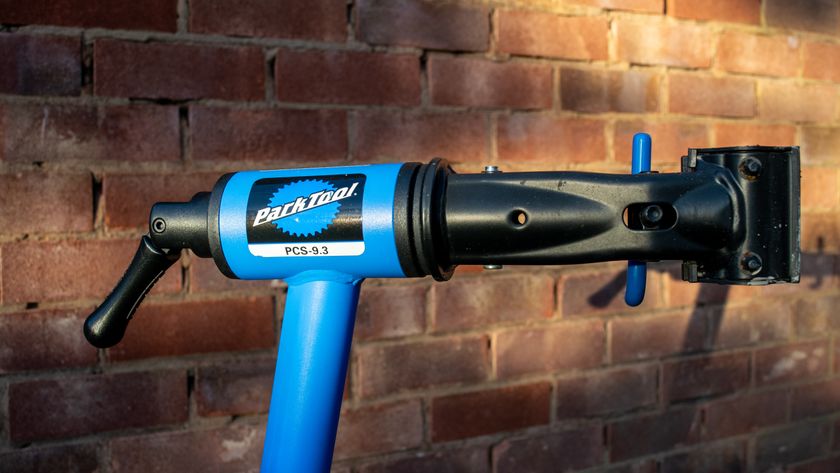Cyclingnews Verdict
Relatively fast, especially at race speeds, but lacking in wet weather performance. There's also a slight weight penalty over the competition.
Pros
- +
Easy to set up
- +
Plush ride feel
- +
Decent dry performance
- +
Reasonably durable for a top-end race tyre
Cons
- -
Wet weather grip leaves a lot to be desired
- -
Heavier than some similar performance tyres
You can trust Cyclingnews
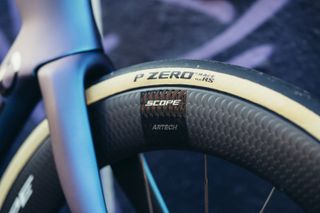
Price: £84.99 / $100
Measured weight 28c: 304g
Hookless compatible: 28c, 30c, 32c only
Widths: 26c, 28c, 30c, 32c
If you’ve been paying attention to the best road bike tyres you’ll have noticed that the names keep getting longer. While before you could opt for a Vittoria Corsa, a Pirelli P Zero, or a Continental GP4000 you now have an absolute Scrabble board of options like the Goodyear Eagle Supersport R, and now the top of the range tyre from Pirelli: The Pirelli P Zero Race TLR RS. This usurps the Italian brand’s previous top-of-the-range race tyre, the Pirelli P Zero Race TLR.
I first spotted it in use around this time last year on the bikes of the Lidl-Trek riders, with a suitably ‘please don’t spot me bike media’ #PROTOTYPE logo subtly emblazoned in large, yellow lettering down the sidewalls to ensure they accidentally made the news headlines during the spring classics campaign.
Given the race-oriented nature of the Pirelli P Zero Race TLR RS I fitted them up in a thoroughly modern 30c width to a thoroughly race oriented set of wheels - the Scope Artech 6.A. The winners of our wind tunnel wheels test - and then fitted them to a thoroughly race oriented pair of bikes, the Pinarello Dogma and the Giant Propel. All in all, I think you’ll agree, thoroughly race-oriented. I then proceeded to not do any racing, because I value my collarbones.
I did, though, hack about the best roads the UK has to offer in my home county of Cornwall, and ride up every hill in my hometown, clocking up 1,100m of elevation in under 40km. All in all, a collection of fast, steep, twisting roads, often covered in muck, and in all weathers. In short: as extreme a tyre test as it was possible to conceive.
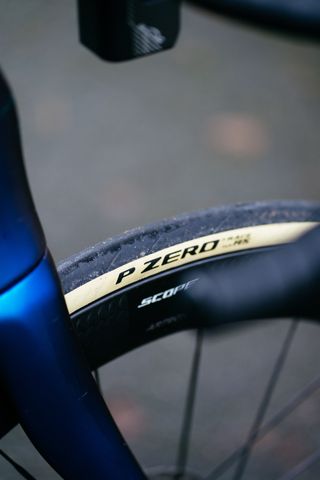
Design and aesthetics
Visually, if you ignore the tan sidewall ‘retro’ option, the only difference between the Pirelli P Zero Race TLR RS and the Pirelli P Zero Race TLR are two small yellow letters - or black, in the case of the tan option - denoting the ‘RS’. I tried to find out what the RS stands for and came up with nothing, so let’s say for the sake of argument it’s ‘Really Speedy’. The tread pattern is the same, but crucially the very much top-of-the-range RS model only comes in 26c, 28c, 30c, and 32c, whereas the one step below non-RS model adds a 35c and truly whopping (by road tyre standards) 40c width.
The tread pattern itself is mostly slick: A slick centre gives way to shoulders featuring a few zig-zag grooves in a regular distribution. My set of 30c tyres plumped up to a very plush 32.5mm measured width on the Scope Artech 6.A wheels, which have an internal width of 25mm. The widest part was about halfway round the sidewall though, with the tread wrapping around the tyre carcass noticeably less than the 30c Panaracer Agilist set I have mounted to a set of Hunt wheels with a marginally narrower internal width. In any case, the measured tread of the Pirelli P Zero Race TLR RS (yes, I am going to get tired of typing that) was 29.2mm, meaning in my tanwall option I could see a strip of sidewall as I rode along.
In terms of rubber formulation, the tyres have a different tread compound (SmartEVO2) compared to the non-RS model, which uses SpeedEVO. There is little information on precisely what makes SmartEVO2 better than SmartEVO, besides a sprinkling of ‘smart polymers’, so I shan’t simply parrot marketing jargon at you.
Interrogating the cross sectional mockups of the TLR RS versus the TLR the key thing to note is the omission of a puncture protection strip. Pirelli doesn’t market the P Zero Race TLR RS as a time trial tyre, in the same vein as the Continental GP5000 S TT or the Vittoria Corsa Pro Speed, but it does certainly have a nod towards all out performance in its design; eschewing a puncture strip is a surefire way to reduce the rolling resistance.
In terms of setup, it’s a modern tyre so tubeless is a must (if the TLR in the name didn’t already give that away). All the size options besides the 26c are hookless compatible, which makes sense from a physics point of view. But also… who is buying into modern hookless rims and then riding around on 26c tyres? Not many, I’d wager.
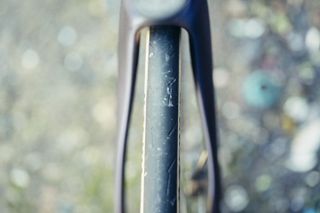
Performance
Let’s start with the setup, which was absolutely painless. Yes this is only on a single tyre/rim combo, but a 25mm internal width is quite a wide gap to fill and the tyres played ball when setting up. No frantic pumping, no soapy water needed. There were no satisfying pops either, with the bead choosing to gently arrive at the sidewall unheard like a disgraced politician using the back entrance rather than having me worry if I’ve been shot with a cannon.
Before I dive into the real-world feelings it’s worth going over the objective data we derived from a day of testing all the best race tyres at Silverstone Sports Engineering’s rolling resistance rig. At 9m/s (roughly 30km/h) the Pirelli P Zero Race TLR RS was bang smack in the mid table. It’s not slow by any means, but it’s measurably slower than something like a Continental GP5000 S TR, to the tune of 7.2 watts for the pair. Up the speed to 11m/s (roughly 40km/h) and it does climb the ranks a little, but the wattage losses against the GP5000 S TR are basically identical. Lab testing isn’t gospel, but it’s worth knowing that you will be paying slightly more for a slightly slower tyre.
How are they on the road? Well, they’re a real Jekyll and Hyde tyre, it must be said. To start with Jekyll, in the dry they behave very well indeed. They’re pretty happy to nip along and while they are measurably slower I couldn’t feel that additional drag and suspect I wouldn’t be able to without back to back testing of an identical width tyre, probably on the same day. If you can’t feel the difference, does it actually matter? Well, I’ll leave that to you. Cornering in the dry wasn’t anything to write home about, for good or for ill, and especially in the 30c width the tread not wrapping further round the sidewalls didn’t trouble me overly. If you really find yourself finding the limits of the tread - as I’ve written about with some pros running out of tread on the Vittoria Corsa Pro - then maybe look for a tyre with a greater wrap.
Even accounting for the larger width versus the nominally ‘standard’ 28c, they were a pretty plush ride. They don’t have the silky, magic carpet of the Vittoria Corsa Pro, but they do have a lovely muted mellowness that’s certainly on the pillowy spectrum.
In the wet, I’m afraid you are unlikely to hit that cornering limit. This is Hyde, and I’m afraid the P Zero Race TLR RS isn’t very good in the wet at all. It is a summer race tyre, but it does still get used in the Spring Classics under the riders of Lidl-Trek. These races can be famously grim, so I don’t think it’s an unfair test to actually use them in the rain.
On Christmas day my family decided to all fall asleep in the early evening in a turkey and ham induced stupor. Because I am unable to sit and do nothing I decided to head out in the fog and light drizzle and ride up every hill in my hometown of Truro. It’s incredibly hilly, with double-digit gradients everywhere and 1,100m elevation in 40km. On anything over 7% though I had to remain seated or the rear tyre would simply not maintain traction. I wasn’t using an abnormally high pressure, especially as I was riding 30c not 28c, so it was certainly disconcerting at times, and frustrating on really steep gradients where getting out of the saddle would usually be a necessity. Suffice it to say, losing traction under my relatively modest power output hardly gave me confidence and cornering performance in the wet wasn't amazing either.
On the plus side, despite riding these tyres in conditions often mirroring the worst that Belgium throws at the pros I never once suffered a puncture. Good sealant, and a sensible amount of it - not the dribble that the pros use - will actually get even very fragile tyres through an awful lot nowadays.
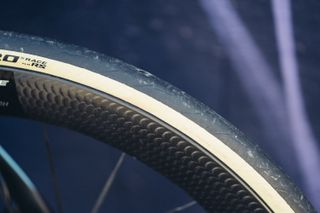
Following the initial publication of this review Pirelli contacted me with the aim of providing some context regarding the wet weather performance of the tyres, making it clear that the P Zero Race TLR RS is a tyre designed for use in warm, dry conditions by amateur riders, and in the cold and wet by professionals due to their greater bike handling skills. A statement from Pirelli reads as follows:
'A tyre like the RS is designed with racing as its top priority. At the World Tour level, but not only there, this means prioritizing rolling speed above all other factors. Given that every tyre manufacturer aims to maximize speed, grip and other characteristics must also be as high as possible, as these tyres are raced in cold and rainy conditions. However, above all else, they need to be fast. Races are won or lost by marginal gains, and professional riders typically have the skills to compensate for any compromises in grip, comfort, or other tyre features.'
While I am in no doubt that the riders in the professional peloton are more skilled handlers than I, I do take some issue with this position. Like it or not consumers will be buying these tyres and, on occasion, will use them in cold or wet conditions.
It also goes onto highlight that other manufacturers, being Continental, Vittoria et. al., each make a more grippy version of their race tyres for use in more inclement weather.
I know race tyres aren't necessarily meant to have optimum grip in winter conditions, but I am in the position where I have ridden the Continental GP5000 S TR in colder and far wetter conditions, notably on a hair-raising ride in the Dolomites, where driving hail and torrential rain was the order of the day, and I have also spent a whole year riding the Vittoria Corsa Pro through all sorts of miserable excursions. Likewise I have ridden the Schwalbe Pro One this winter in worse conditions than I treated the P Zero TLR RS to.
The Corsa pro was certainly a more fragile tyre, and I wouldn't recommend it for winter use for that reason, and I would also caution against using any top end race tyre year round for reasons of durability and puncture resistance, but none of them were found wanting for grip in wet and cold weather in the way I found the P Zero Race TLR RS to.
Value
Sadly this isn’t going to be a great report card. This option is slightly more expensive than the GP5000 S TR - our benchmark in terms of performance - but doesn’t perform as well in terms of absolute wattage, wet weather performance, or weight. I didn’t weigh mine before I slapped a load of goo in them, but in the 28c variety, there’s a 114g penalty for a pair.
If you ride in the dry - and I’ll admit I spend more time in the rain than I suspect most do - and you find these on sale then I do actually think they could be a decent buy. They’re fast and plush, given a pseudo-cotton feeling without the fragility. They’re relatively sturdy for what is still a pretty speedy tyre, but at full price, taken in the round, I can’t see where the value lies.
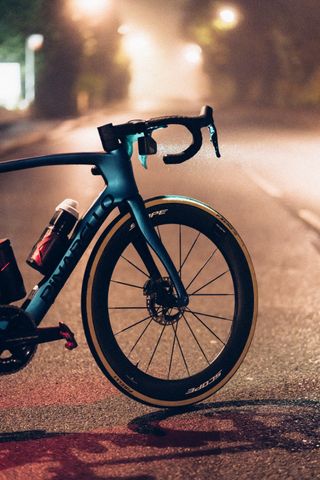
Verdict
The Pirelli P Zero Race TLR RS is, in the right conditions, a very good tyre. It sets up very easily, has displayed admirable durability for what is a top-end race tyre, and in the dry it is both moderately fast, very comfortable, and handles well. In the wet though I’m afraid it lacks the grip to truly trust it, which is a little bit of a letdown. My suggestion, if you are dead set on a set of these, is to opt for the larger widths to maximise your contact patch.
| Design and aesthetics | Relatively sensible, modern widths catered for, and mostly hookless compatible too. I'd like to see the tread wrap further around the carcass though. | 8/10 |
| Performance | In the dry they hold their own against similar competitors, but in the wet they leave a lot to be desired. | 7/10 |
| Weight | Relatively light, but not the lightest. | 8/10 |
| Tubeless Setup | Easy peasy, with no dramas, no weeping, and no soap needed. | 9/10 |
| Value | Given they are more expensive than a GP5000, as well as being slower, heavier, and worse in the wet this is a hard sell. | 6/10 |
| Overall | Row 5 - Cell 1 | 76% |

Will joined the Cyclingnews team as a reviews writer in 2022, having previously written for Cyclist, BikeRadar and Advntr. He’s tried his hand at most cycling disciplines, from the standard mix of road, gravel, and mountain bike, to the more unusual like bike polo and tracklocross. He’s made his own bike frames, covered tech news from the biggest races on the planet, and published countless premium galleries thanks to his excellent photographic eye. Also, given he doesn’t ever ride indoors he’s become a real expert on foul-weather riding gear. His collection of bikes is a real smorgasbord, with everything from vintage-style steel tourers through to superlight flat bar hill climb machines.
